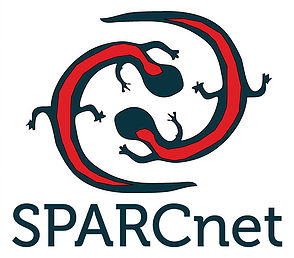SPARCnet
In 2013, the Salamander Population and Adaptation Research Collaboration Network (SPARCnet) started as a partnership between researchers at Penn State University and the USGS Northeast Amphibian and Research Monitoring Initiative (NEARMI) with the goal of creating a research and education network to understand terrestrial salamander population dynamics across multiple scales and the capacity for salamanders to respond to environmental change. The growing network consists of over 20 research sites collecting mark-recapture data and 6 citizen science sites across the geographic range of red backed salamanders (Plethodon cinereus). In Spring 2018, SPARCnet sites had collected over 14,000 unique capture records of red backed salamanders.
The research network studies the population dynamics of this cryptic species by:
1) Creating a versatile, statistically and methodologically efficient research protocol that utilizes spatial capture-recapture models
2) Establishing a network of study partners that perform and coordinate observational and experimental studies with a common species
The core project uses mark-recapture methods in a study design of replicated plots. Collaborators are designing additional local or network projects that examine a range of topics from physiology to community ecology in this system, where additional research questions can be informed by the rich data set from the larger network. The other central component of SPARCnet is the development of citizen science opportunities, science curriculum, field biology courses, and educational materials for nature centers, refuge visitor centers, and the National Zoo.

Please visit the SPARCnet website for more information about the network
The QUBESHub for participating sites can be found here

